FAQs → Baking and Donation Support → Bread → Flour & Ingredient Selection
Answers to the most commonly asked questions can be found below. Still Stumped? Contact Us!
Flour and Ingredient Selection (11)
Cairnspring Mills recently (early summer 2023) modified their Trailblazer flour which is used by our greater Seattle area bakers to a blend. This blend doesn’t have the same enzymatic activity as the previous version. As a result, we recommend adding 2g – 3g of diastatic malt per loaf to the autolyse step.
Below is the email sent to our bakers on Saturday, July 22nd.
This email is an update on a “rising” issue many are experiencing, including myself, with our bread bakes over the past 3-5 doughnations.
I think we’ve finally cracked the code. It seems to result from the shift in the Trailblazer flour, which is now a blend of wheat vs a single varietal of Yecora Rojo. This new blended TB flour has a higher falling number (FN), one of the metrics flour manufacturers often test for future bread performance. The WSU bread lab has a machine that runs the Hagburg Falling Number test.
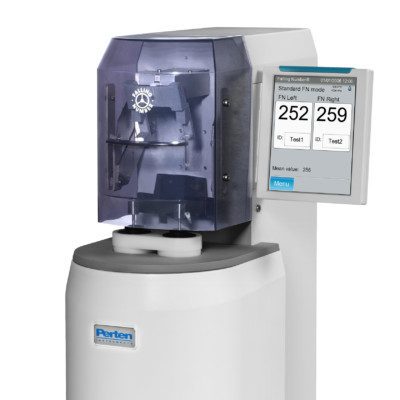
The machine at the lab, looks roughly like the above. It is used to measure the enzyme activity in flour. The FN (Falling Number) of flour is related to the amount and activity of cereal enzyme α-amylase, which is present in wheat after harvesting.
The FN is the time in seconds required for a device to fall a measured distance through a hot flour/water mixture while heat is applied. (Literally tracking the speed of a plunger through the slurry.) If the enzymatic activity is high, the starch is rapidly broken down (liquefied) during gelatinization. So then, the device falls through the relatively liquid paste in a short time. A less viscous fluid opposing less resistance to the flow means the FN is low. On the other hand, if the enzyme’s activity is low, it takes longer for the device to cover the distance of its fall. This means the falling number is high. See the Test
Which brings us to our current Trailblazer.
I do not know the exact falling number for our current TB, but it is reportedly HIGH by Mel Darbyshire, executive baker at Grand Central, who purchases silos of the stuff. And in the shop, meaning at Grand Central, they compensate for the higher falling number, lower enzymatic activity by adding diastatic malt. Diastatic malt vs nondiastic malt the first is cured at low heat and still has its enzymatic properties; nondiastic is mostly lovely sugars we like for browning.
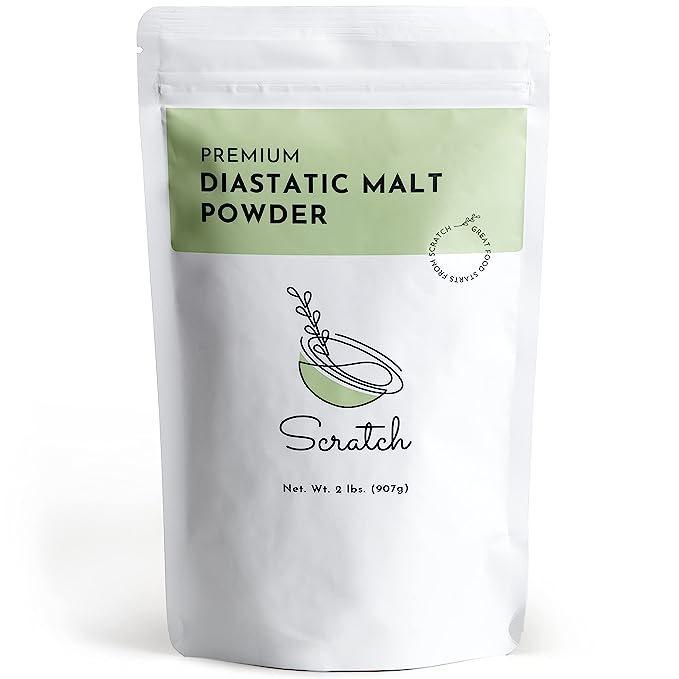
If you are experiencing problems with your loaves, they aren’t rising like they used to, a little Diastatic Malt Powder is your friend. It might be difficult to find at your local store, but you can get it at Amazon, King Arthur, Web Restaurant, and other suppliers.
A little goes a long way. And there is a lot of information on the web. I recommend adding the diastatic malt powder at the beginning of the autolyze phase; you can also add it during the mix if you prefer. How much to add? The range is quite significant: Diastatic malt should be added to the total flour weight in the range of 0.5 to 2%. One loaf is approximately 600g; let’s start at .02%, which would be 3 grams per loaf; making 4 loaves, you’ll want to add 12 grams. Easy math and reasonable assurance for better activity.
There is a lot of information on making your own diastatic malt, for all you DIY’ers. Here is one source for the process: The Fresh Loaf. Another recent piece by talented baker & blogger Maurizio Leo – The Perfect Loaf – What Is Diastatic Malt
I’m so grateful we have a solution to this prickly problem; many of us were wracking our brains about why our near-perfect loaves were acting up. This is part of the issue. In addition, I will put the Organic Expresso to the test. It has a lower falling number and shouldn’t require the diastatic malt. I will also check with Cairnspring to understand whether the current FN issue will be persistent or seasonal. This is freshly milled wheat and flour and part of the ongoing variables that professional bakers manage. We’ve been blessed with so much consistency that it caught us a bit flat-footed, and flat loafed!
Back to FN & Diastatic Malt – Some of you may not have any issues. So this can be a tool in your toolkit down the road. For those of you who are, I’ve shared the beginning of the breadcrumb trail. Some of you will go quite deep down this rabbit hole, and I look forward to hearing from you and your continued learning.
2023-08-16 UPDATE:
Feedback from bakers using the new flour is that the diastatic malt has indeed done the trick. Loaves are back to standard heights.
Hanne, this is a great question and I’m sorry for the delay. We are recommending a small amount of Diastatic Malt to TB even if purchased May 2023. It shouldn’t hurt and it might help if it is the “blended” version. We’re in conversations with Cairnsprings right now to understand the future disposition of the flour. We will keep you posted on those conversations.
Do I need to add diastatic malt to TB received with the May 2023 order? Thanks.
Checked on the shelf life of Diastatic Malt Powder. Dr. Google says it’s about a year, and that can be prolonged by keeping it in the freezer.
We talked about using Diastatic Malt today during the baker debrief. Several bakers reported better success with a smaller amount of diastatic malt 2 to 3 g per loaf you are baking. Give this a try and report back.
Leave a Reply
To support our baking efforts, we run a monthly flour fundraiser. This fundraiser gives our volunteer bakers a lovely discount on high-quality professional flours and allows our 501c3 non-profit organization to thrive! Like a sourdough starter, regular “feedings” help to fund our growth and development. Check out our offerings and place your order here. You can also find a link to order supplies on your dashboard.
Locally, meaning in the greater Seattle area, we have a delivery service once a month. This takes place roughly the third week of each month. And the dates can be found on our program calendar. In order for our volunteers to have enough time to prepare for each delivery event, we turn the store off three days before we have to pack flour and load the truck. It is a good idea to order your supplies as soon as you know you need them.
We also direct ship some supplies to our baking friends and chapters in Idaho, Oregon, and California.
In all cases, we strive to keep this program accessible and affordable to the best of our ability while ensuring we can support our food banks for years to come.
Leave a Reply
Crystals Happen!
If it’s been a while since you last used your honey, you might find it has separated or crystallized. According to Master Beekeeper and President of the Puget Sound Beekeepers Association, Dawn Beck, this is a naturally occurring property with honey and is a simple result of water pulling away from the sugar solution. This “separation” results in a crystallization of the remaining sugars.
But you don’t need to pitch that jar of honey. Instead, there is an easy way to reconstitute those crystals! This tip from Dawn, “Turn on your oven light, place your jar of honey in the oven, and leave it overnight (no heat required!). By morning, your honey should have returned to its liquid gold state and be ready to use.

Let us know how this works for you? Have another idea, share in the comments below?
Our Community Loaves recipe calls for the use of Olive Oil. It provides a lovely tenderizing quality to our bread and serves as a natural preservative, extending the shelf life just a bit.
Not all olive oils are the same. Our formulas were developed with Kirkland Signature’s Organic Olive Oil, but you can substitute any olive oil, including a “best quality,” if you want a milder flavor profile.
Butter is not an acceptable substitution. Although delicious, it messes with the nutrition, and right now, we have no dairy in our bread, which can be helpful for those with dairy allergies.
Avocado oil, however, would be a truly acceptable substitution, plant-based and nutritionally it is on par, but it is not indicated on our “label” so we ask you not to substitute the fat. One never knows if someone out there might have an Avocado oil allergy and we didn’t alert the recipient through our packaging information.
But, if this is something you all would like us to consider, we can change our bread bag and add Avocado Oil to the list of ingredients. It would say Olive or Avocado Oil. Similar to the way we say Honey or Molasses. Pretty simple. Please use the discussion in this FAQ to let us know if that interests you!
Leave a Reply
We love flour, and the choices we make provide flavor and nutrition to our bread. Wherever possible, we recommend the use of freshly milled, local flours. In this way, we extend our Baking the World A Better Place to foster a vibrant regional grain economy and deepen our respect for providing local food banks with items made from high-quality ingredients. At the same time, our love of baking and need to create a sustainable non-profit organization creates a winning combination. Our volunteer bakers are able to purchase the flour at a steep discount to retail pricing and we manage to fundraise at the same time.
But what if you need to make a substitution? Substitutions are sometimes needed.
Here are the Washington recommended flours – used 50/50 in our bread loaf – and their suitable substitutions:
- Trail Blazer – High Extraction – T85 Bread Flour (Ash count .85%)*
- Cairnsprings – Organic Expresso Artisan Bread Flour
- Cairnsprings – Sequoia Bread Flour
- Fairhaven Fine Bread Flour – Whole Grain Flour
- Cairnsprings – Organic Expresso Whole Grain Flour
- Mill Your Own Whole Grain Flour
- Other Whole Grain Bread Flour
- The bread formula differs slightly in different locations. For example in California we recommend using Central Milling’s T110 flour. That is a one-stop shop; no “blending” is needed for our loaf. It is the equivalent of the two mixtures above. If you have a different formula you will find flour coaching on your formulas page off the volunteer dashboard.
*Note Trail Blazer flour has had some inconsistencies in it’s enzymatic activity. The current recommendation is to add a pinch of diastatic malt – or substitute for one of the other T85 flours. See Details Here
Leave a Reply
What is Instant Dry Yeast & How Does It Differ From Active Yeast?
Instant yeast is a dry yeast that comes in smaller granules than active dry yeast, absorbs liquid rapidly, and does not need to be rehydrated or proofed before being mixed into flour. Active dry and instant yeasts can be substituted for one another at a 1:1 ratio. Active dry yeast will take about 15 to 20 minutes longer to rise than instant yeast. Professional bakers enjoy the ease of “instant” yeast, which can be added directly to your mix without “proofing.” Active yeast granules are covered with a small coating that “dissolves” when activated by warm water.
Storing Yeast
You can store an unopened, airtight package of yeast in your pantry for up to two years (but be sure to check the best by or expiration date). Once opened, keep it in the freezer for up to six months or the refrigerator for up to four months. These are simple guidelines and nothing magical in the timeframes. Bakers have kept yeast in the freezer for up to a year without difficulty. But you don’t have to guess. A simple test will tell you if your yeast is still viable.
Is My Yeast Still Viable?
If you suspect that your yeast might be past its prime, you can easily check this out: you’re going to “Proof” the yeast. Follow these instructions:
1. Place some warm water in a cup, say 1/4 cup. Aim for around 100–110 degrees Fahrenheit. Avoid going above 120 degrees, as you’ll begin to damage the yeast at this point. At 140 degrees, you’ll kill the yeast.
2. Mix in yeast (2 1/4 tsp) and sugar (1 tsp) to the warm water. Give a little stir, a small whisk is helpful; this “action” agitates and helps the yeast react. Leave the mixture for 10 minutes. Upon return, if you have a foamy and creamy looking concoction on top, your yeast is still active and good to go (see image below).

Resources: Masterclass, FoodNetwork, The Spruce Eats
Need yeast? Order from our Flour Fundraiser Store!
Leave a Reply
If you want to view your previous Flour Fundraiser orders, it’s very easy to do so! Simply follow the steps below:
Step 1: On your Dashboard, click on Profile
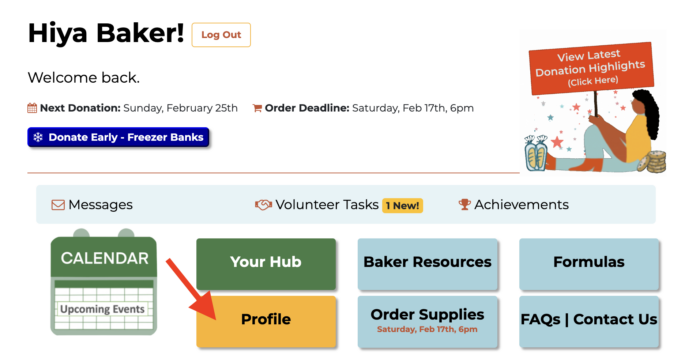
Step 2: Scroll down to the bottom of the page, and you’ll see the Order History Section. Click “View” on the line of the order you’d like to see

Step 4: Voila! There it is.
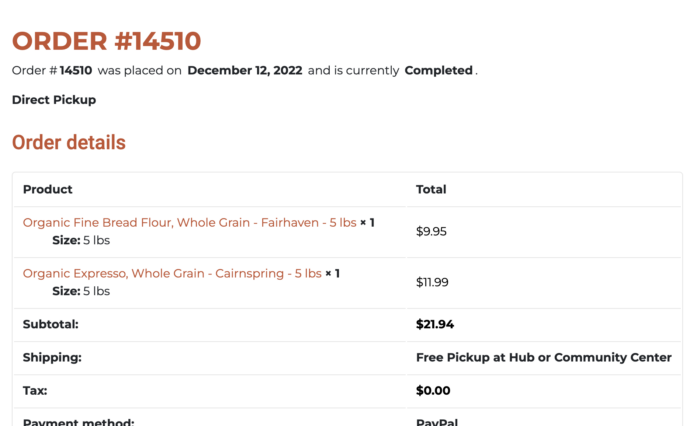
Have any questions? Please reach out to bakersupport@communityloaves.org.
Leave a Reply
To support our baking efforts, we run a monthly flour fundraiser. This fundraiser gives our volunteer bakers a lovely discount on high-quality professional flours and allows our 501c3 non-profit organization to thrive! Like a sourdough starter, regular “feedings” help to fund our growth and development. Registered volunteers can easily access our online shop for the purchase of essential supplies for the items we bake and donate to our food bank partners.
But, if you aren’t a registered volunteer, and are concerned about having time to bake with us, you can support the mission of Community Loaves and your baking habit at the same time. Every Tuesday from 10:00 – 4:00 pm, our Flour Store is open for drop-in visits. We’re located at 8730 122nd Ave NE, Kirkland. Here, at Flour Central, you can purchase freshly milled flours from the Skagit at a discount to retail, as well as a few specialty flours typically available to professional bakers only. If you have questions on availability, send us an email at bakersupport@communityloaves.org.
In all cases, we strive to keep this program accessible and affordable to the best of our ability while ensuring we can support our food banks for years to come.
Leave a Reply
If you are trying to place an order you might receive a pesky credit card notification that suggests your card is invalid. A particularly useless message when you know full well that your card is valid. We believe we have resolved this issue on our end, but if you encounter it, please try the following workaround – the goal is to make your browser forget what it might have previously saved.
If you use a Chrome browser, hold the Ctrl key down and click the reload button, which looks like this: 
If you use a Firefox browser, hold the Shift key instead and, again, click the reload button: 
Or, on Safari on a MacBook, press these keys at the same time: CMD + OPTION + R
If problems persist, reach out to us at orders@communityloaves.org or bakersupport@communityloaves.org. We have people at the ready to assist.
For ease, efficiency, and to prevent additional confusion, avoid sending these issues to your hub leader. Their role as program coordinator and cheerleader does not include troubleshooting CL baker website issues. It is much swifter when we can communicate directly.
